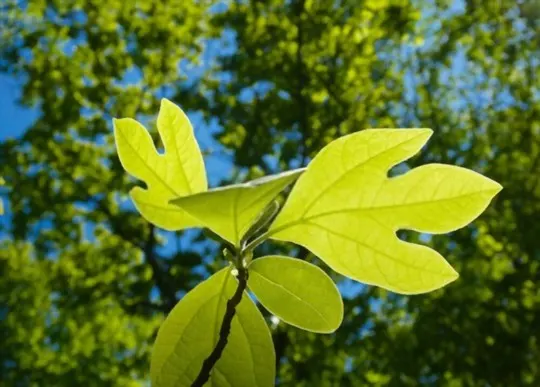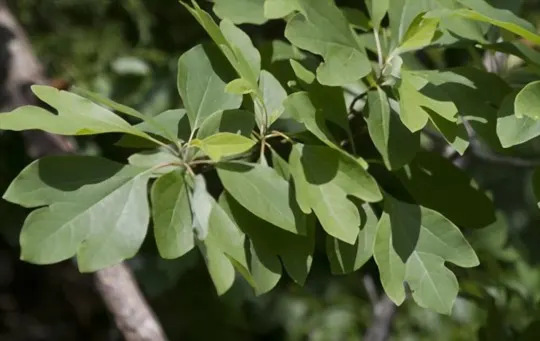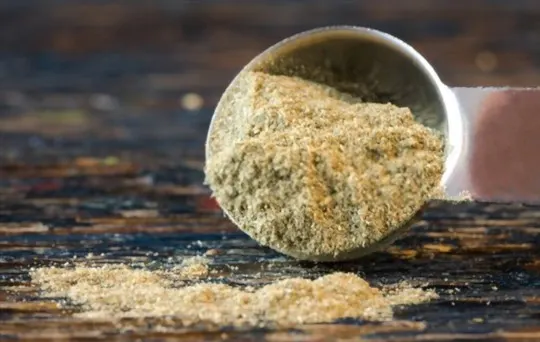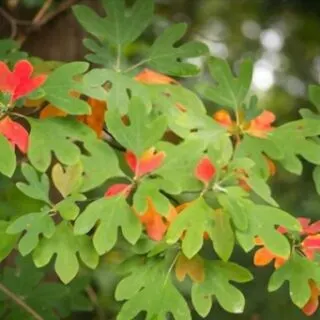We’ve all heard of Sassafras, but have you ever wondered what it actually tastes like?
This root-based herb has been around since ancient civilizations, and is still used to flavor many dishes today.
But if you’ve never tasted Sassafras before, it can be hard to figure out exactly what this unique seasoning will do for the taste experience in your kitchen.
In this comprehensive guide, we will explain what Sassafras tastes like, how to incorporate it into recipes and meals that harness its signature flavor, as well as exploring some of the surprising health benefits behind this amazing herb.
So break out the spices rack and get ready for a tantalizing journey through the flavors of Sassafras!
What is Sassafras?

Sassafras is a deciduous tree native to Eastern North America, known for its distinct flavor and aroma.
The tree’s bark, roots, and leaves are used as a traditional herbal medicine and culinary spice.
Sassafras has a pungent, sweet and slightly spicy flavor, similar to a combination of cinnamon and cloves, with a hint of citrus.
Its taste is often described as unique and hard to pinpoint to a specific flavor.
However, its use has become controversial due to the presence of safrole, a carcinogenic compound found in sassafras oil.
The FDA has banned using sassafras oil as a food additive or flavoring, and it’s crucial to consume sassafras in moderation.
Fun fact – Sassafras is also the primary ingredient in the famous American soft drink, root beer.
Nowadays, commercial root beer manufacturers use safrole-free sassafras extract to ensure the safety of their product.
What Does Sassafras Taste Like?

Sassafras is a tree native to North America, and its roots and bark are used to create a unique flavor in a variety of dishes and beverages.
Sassafras tea is popular in the southern United States and has a distinct, root-beer-like flavor with notes of licorice and cinnamon.
When used as a spice, Sassafras has a strong, pungent aroma, and a taste that is both sweet and savory, with a slightly bitter aftertaste.
However, it’s worth noting that Sassafras contains safrole, which is a potentially carcinogenic compound.
As such, the sale of Sassafras bark and roots is regulated by the FDA, and it’s important to use this ingredient in moderation.
Pro tip: When using Sassafras as a spice or flavoring, start with a small amount and adjust to taste.
Culinary Uses of Sassafras

Sassafras is a tree native to North America with a distinct root bark that has been used for centuries in traditional medicine and cuisine.
Sassafras has a unique taste that can be difficult to describe.
Sassafras has a sweet, slightly minty flavor that is often compared to root beer.
The root bark can be used to make teas, soups, and sauces, while the leaves are used to season meats and seafood.
The most common culinary use of sassafras is in the making of filé powder, which is ground sassafras leaves that are used as a thickener and flavoring in gumbo and other Cajun and Creole dishes.
Sassafras has long been used in traditional medicine to treat a variety of ailments, including colds, fever, and arthritis.
However, sassafras contains a compound called safrole, which can be toxic in large amounts.
As a result, the use of sassafras in food and drink is regulated in some countries.
1 – Filé Powder
Filé powder is a seasoning made from dried, ground sassafras leaves.
It is often used in traditional Louisiana cuisine as a thickener and flavoring agent for dishes like gumbo and jambalaya.
Sassafras is a deciduous tree native to eastern North America.
The tree has distinctive green leaves that turn orange, red, or purple in the fall, as well as fragrant yellow flowers and blue-black fruit.
Sassafras has a unique flavor that is described as sweet, root-beer-like, and slightly mentholated.
The flavor comes from the presence of safrole, a compound that is also used to make root beer.
However, safrole has been banned by the FDA due to its potential carcinogenic properties.
As a result, modern filé powders are often made from sassafras leaves that have been certified as safrole-free.
2 – Sassafras Tea
Sassafras is a tree commonly found in North America known for its aromatic roots, which are used to make a flavorful tea.
Sassafras tea has a unique taste with hints of citrus, mint, and anise.
Here’s how to make sassafras tea at home:
- Gather a handful of sassafras roots.
- Wash them thoroughly and chop them into small pieces.
- Boil four cups of water in a pot and add the chopped roots to it.
- Let it simmer for 20-25 minutes.
- Strain the tea into a cup and enjoy it hot or cold.
Pro tip: Sassafras contains a substance called safrole, which is harmful in large doses.
To avoid any health risks, it’s recommended that you consume sassafras tea in moderation.
Sassafras as a Medicinal Plant

Sassafras is a versatile plant that has been used for centuries for its medicinal benefits.
Sassafras is a deciduous tree with fragrant leaves and bark that thrives in warm and humid climates such as the southern United States.
Its roots, bark, and leaves have been used to treat a variety of ailments, including arthritis, inflammation, and digestive issues.
Sassafras is also known for its distinct taste.
The leaves and bark have a spicy and earthy flavor with a hint of citrus, similar to a combination of cinnamon and nutmeg.
The roots are used to make tea, which has a unique, sweet, and slightly fruity taste.
However, it’s important to note that sassafras contains safrole, a compound that has been linked to liver damage and is banned in some countries.
Therefore, it’s recommended to consume sassafras in moderation and consult with a healthcare professional before use.
Potential Health Risks of Sassafras Consumption
Sassafras is a plant that has been used for centuries for medicinal and culinary purposes.
However, it is essential to understand the potential health risks associated with sassafras consumption.
Sassafras contains a chemical called safrole, which has been linked to liver damage and cancer in animal studies.
Consuming large amounts of sassafras tea or other products containing safrole can be harmful to human health.
Sassafras has a unique taste described as a combination of bitter and sweet with a distinct earthy and citrusy flavor.
It is commonly used to flavor candies, root beer, and other beverages.
It is recommended to avoid consuming sassafras or sassafras-containing products due to its potential health risks.
Conclusion
In conclusion, sassafras is a tree native to North America, prized for its aromatic roots, leaves, and bark.
Sassafras has a distinct, sweet, and spicy flavor, with notes of licorice, cinnamon, and cloves.
The different parts of the sassafras tree have been used for centuries in traditional medicine and cuisine, as well as in the production of perfumes, beverages, and soaps.
However, the use of sassafras has been associated with health risks, namely liver damage and cancer, and some countries have banned or restricted its consumption.
Despite its controversial status, sassafras has a unique and intriguing flavor profile that makes it a sought-after ingredient in the culinary world.
If you decide to try sassafras, make sure to use it in moderation and consult with a healthcare professional beforehand to discuss any potential risks.

What Does Sassafras Taste Like? A Comprehensive Guide
Ingredients
- Sassafras
- Ingredients from your selected recipes
Instructions
- Select ingredients that work well together.
- Use a recipe or method that will enhance their natural taste.
- Taste and adjust the recipe as needed to achieve the desired flavor.

Carrie is a food writer and editor with more than 15 years of experience. She has worked for some of the biggest names in the food industry, including Bon Appétit, Food & Wine, and Martha Stewart Living.
As the Editor in Chief of IntroChicago.com, Carrie oversees all of the content on the site. She also manages the team of contributing writers and editors, who help to create delicious recipes, helpful tips, and informative articles that you’ll find on the site.
A native of the Chicago area, Carrie is passionate about all things food. She loves trying new restaurants and experimenting with new recipes in her kitchen. She’s also a graduate of the Culinary Institute of America, so she knows a thing or two about food!
